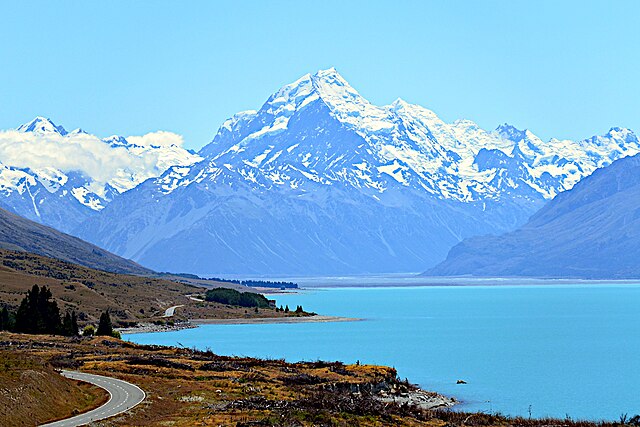The Māori protest movement is a broad indigenous rights movement in New Zealand. While there was a range of conflicts between Māori and European immigrants prior to the signing of the Treaty of Waitangi in 1840, the signing provided one reason for protesting. Disagreements in the decades following the signing sometimes included war.
Early activism over the issue of sporting contacts with apartheid South Africa
Whina Cooper leads the Māori Land March through Hamilton in 1975
Moutoa Gardens in Whanganui. Seen in this photo: the Kemp Monument, the Māori War Memorial, the School Memorial and the Moutoa Monument.
Huntly and the Waikato, New Zealand 1991
New Zealand is an island country in the southwestern Pacific Ocean. It consists of two main landmasses—the North Island and the South Island —and over 700 smaller islands. It is the sixth-largest island country by area and lies east of Australia across the Tasman Sea and south of the islands of New Caledonia, Fiji, and Tonga. The country's varied topography and sharp mountain peaks, including the Southern Alps, owe much to tectonic uplift and volcanic eruptions. New Zealand's capital city is Wellington, and its most populous city is Auckland.
The Waitangi sheet from the Treaty of Waitangi
A meeting of European and Māori residents of Hawke's Bay Province. Engraving, 1863.
The snow-capped Southern Alps dominate the South Island, while the North Island's Northland Peninsula stretches towards the subtropics.
Aoraki / Mount Cook is the highest point in New Zealand, at 3,724 metres.








